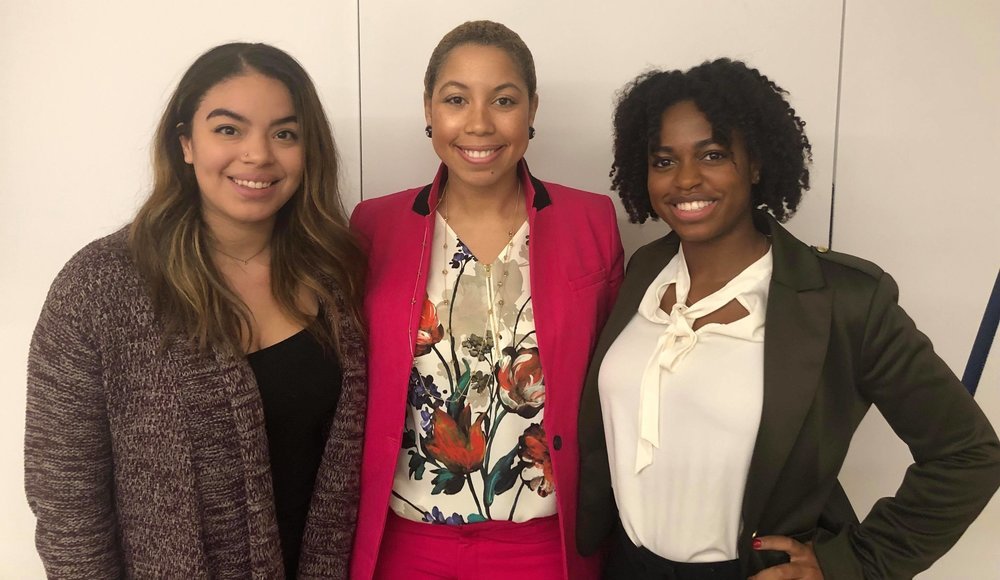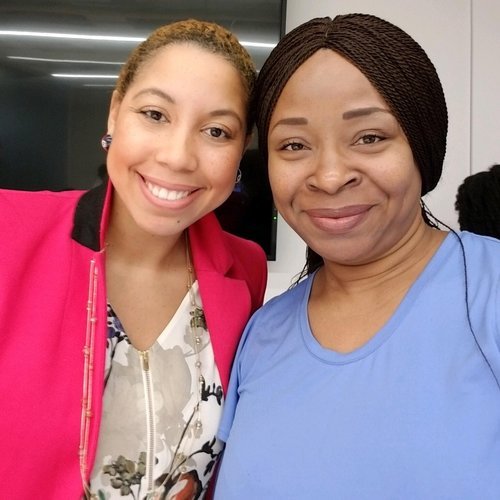Hey, Ladies! Here’s How to Identify and Organize a Successful Job Search



This year, I promised to sprinkle #BlackGirlMagic everywhere. Dedicated to doing so, I recently had the honor of speaking to dynamic women across sectors and industries; all of which were diverse in background and age. These women were in a career development program with Dress For Success (DFS), the worldwide non-profit organization that is dedicated to empowering women to “achieve economic independence by providing a network of support, professional attire, and the development tools to help women thrive in work and in life. DFS is located in 160 cities and in 30 countries and has helped more than 1 million women secure work to become self-sufficient. Much of the DFS’s success is due to engagement of volunteers and I was grateful to be a part of that this week.
I admire and look up to the organization's CEO, Joi Gordon, who has said to ABC News, “When you marry your purpose and your passion, you could just about do anything." Joi reiterates something that I spoke to the women about this week, to never “wait for other people to see the value in you,” instead, make your value be known, communicate it, and back it up with in practice and in writing through such tactics as a brag sheet.
I also told the fabulous women to go above and beyond what’s asked of them, which is the best way to stand out and grow. Joi and I both agree that it comes down to showing up and showing out. That means to, “show up for new assignments, ask for opportunities, reach across departments, and do work in other spaces; even if it isn’t your job."
The lesson that I taught was how to “Identify Employment Opportunities and Organize A Successful Job Search.” Here are the steps to IDENTIFY EMPLOYMENT OPPS:
1. Be A Student of the Game
Never stop learning your craft and you should be on LinkedIn more than any other platform. Don’t just look around, post about recent news, industry updates, respond and engage. It’s imperative to stay on top of updates in your respective field.
2. Never Stop Having Informational Interviews
At the event, I was asked to explain what an informational interview is. It’s an interview just to get to know someone, not for a particular job. Your goal is to impress the person within this limited time frame so that they’ll become an advocate for you and in return introduce you to others in the industry. It should be a ripple effect that every time you meet with someone, you end up with new contacts and grow your rolodex of industry contacts. Always be on the lookout for the #RippleEffect!
3. Find Mentors and then Sponsors
You should know the difference between a mentor and a sponsor. A mentor is someone who coaches you and gives you career advice. They do not have to be in your same field. A sponsor is someone who has the ability to make a phone call and get you a job interview, or can speak to someone to aid you in a promotion or raise. They’re an effective go-getter advocate, vs. a coach (mentor).
4. Volunteer
Do free work. Do the job that you want to do for free and eventually, you’ll be in the position to ask for payment, because you’ll be doing above and beyond what’s was initially asked or required of you. This is the only way to get a promotion too -- you need to do more than what you were doing before. Do the job that you want in advance before you have the title, then ask for it, because you’ve already shown that you can do it. #FreeWork (for a limited time ONLY)
If necessary be open to temp work, internships and fellowships.
5. Resume and Portfolios
Your resume should be updated at all times. Yes, all times. It is a part of your job to update your resume, and to have a brag sheet/work journal, where you highlight every single one of your wins, as well as all of your new skills and new work that you’re taking on. Learn something new, update your brag sheet, learn a new skill, update your brag sheet. Then, when ready to ask for more money, a promotion, or anything in that realm, you’ve got the document in writing to show for it. You should always be able to identify how you have recently gone above and beyond your job title and responsibilities. Be irreplaceable!
Every industry is always changing, from time to time have conversations with those leaving college and entering the workforce, they probably have really cool resume designs. I know they do as I work with both undergraduate and graduate college students daily. Stay up-to-date, always.
6. Don’t forget about job boards, career sites, social media, headhunters and recruitment agencies...oh and never stop networking – Meet people and then some more!
People need to know you more than you need to know people. Go to networking events, contact your college’s alumni office, reach out to people on LinkedIn for good reasons only. And don’t forget the power of leveraging your family and friends to help you on your job search.
You find a job online, wonderful, now go and make a connection to a real person who works there. Be short and concise, share your resume with them. Do not waste their time, get to the point and be meaningful and memorable.
Here are questions to answer to help you identify your next employment opportunity:
Step 1: Start With Your Career Goals
Who:
Who are you and why should anyone take notice?
What:
What do you do and what can you learn to do?
What is unique about you?
Where:
Where have you served before and in what applicable capacity?
Always engage positively on social media (or keep it all private)
When:
When’s the last time you’ve had this role or done this work?
Why:
Why does the job need you?
Why should the job hire you?
How:
How have you done it before (experience)?
How will you get it done now (relevance)?
Step 2: Create a Schedule
Set aside hours dedicated to creating a great resume and portfolio if needed
Clean up all public social media accounts
Update LinkedIn (mobile) and engage in meaningful conversations and interactions, job searching, applying, emailing, networking
Put a short and unique LinkedIn URL on your resume
Step 3: Keep track of applications and interactions
Follow-up accordingly
Respond in a timely fashion, as expected
Provide detailed and timely thank you emails
Step 4: Never Give Up!
Believe in yourself always!
